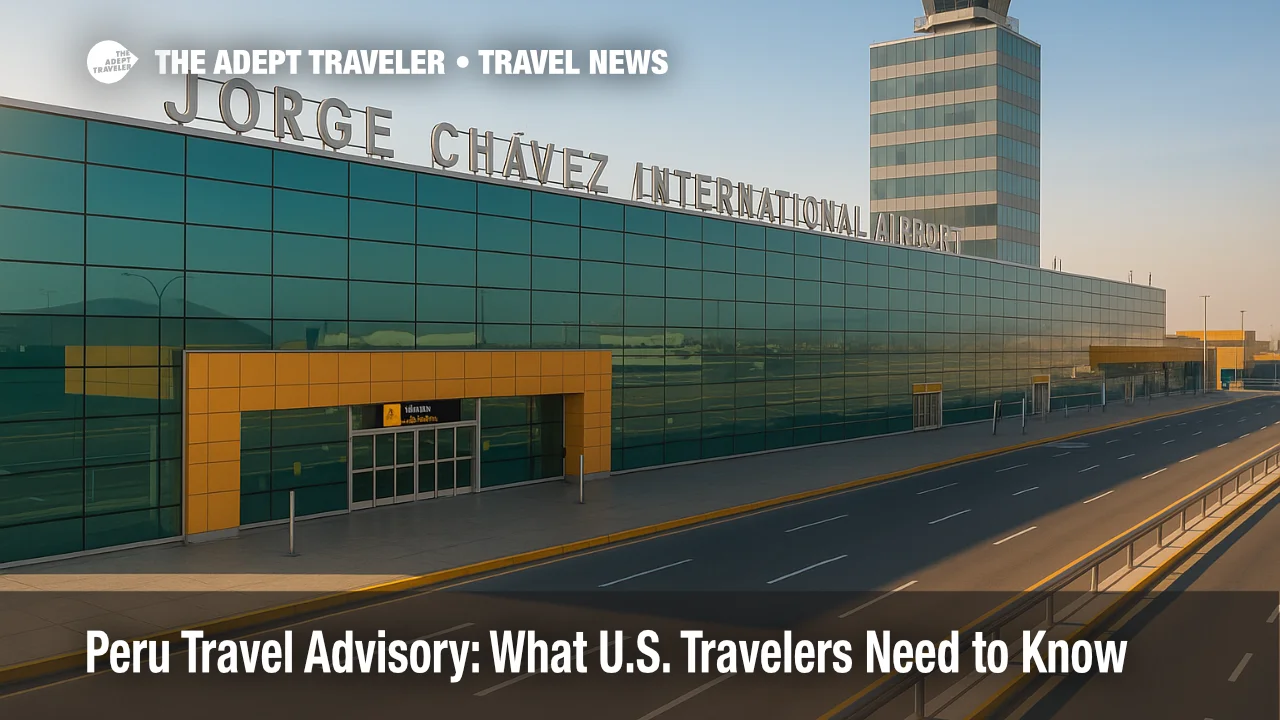Peru travel advisory: What U.S. travelers need to know

Key points
- Canada urges high caution for Peru travel.
- U.S. issues Level 2 advisory with regional warnings.
- Protests and strikes can disrupt flights and roads.
Canada updated its Peru travel advisory on October 9, 2025, urging travelers to exercise a high degree of caution due to crime, social conflicts, and strikes that can disrupt transport and movement. The United States currently rates Peru at Level 2, exercise increased caution, because of crime, civil unrest, and kidnapping risks, with stronger regional warnings for specific areas. For U.S. travelers, the practical takeaway is to expect periodic disruptions, avoid protest areas, and plan extra time for airport transfers in Lima.
Peru travel advisory
Canada's advisory highlights high crime levels and recurrent social conflicts, and advises avoiding non essential travel in several provinces tied to domestic terrorism, drug trafficking, and landmine risks near parts of the borders with Colombia and Ecuador. The U.S. Department of State maintains a Level 2 advisory for Peru, but notes that some regions carry stricter guidance. The U.S. Embassy in Lima has issued multiple recent demonstration alerts, underscoring that strikes and protests can block roads, close businesses, and trigger short notice states of emergency that restrict freedom of movement. Travelers connecting through Jorge Chávez International Airport (LIM) in Lima should budget extra time when alerts are active.
Latest developments
Protests intensified in mid October, with large demonstrations in Lima and other cities resulting in fatalities and dozens of injuries, according to international wire reports. Authorities have pledged investigations, while civil groups continue to mobilize over corruption, crime, and political instability. These events illustrate why both Canada and the United States emphasize situational awareness and avoidance of demonstrations.
Analysis
For U.S. travelers, the most reliable risk control is advance planning and live monitoring. Enroll in the State Department's Smart Traveler Enrollment Program to receive security updates, then track the U.S. Embassy Lima alert page daily during your trip. When demonstration alerts are posted, shift non essential movements to morning or midday, carry water and identification, and use hotel or trusted car services that understand local closures. In Lima, ask your hotel to confirm the best route to Jorge Chávez International, and leave earlier than normal during strike periods. In high risk regions called out by either Canada or the United States, consider guided operators with established safety protocols or reroute entirely. If you encounter a protest, do not film at close range, disengage calmly, and move to a populated, well lit area.
Final thoughts
Both Canada's update and the U.S. Level 2 guidance point to a fluid security environment that can shift quickly at the local level. If Peru is on your itinerary, use official alerts, avoid demonstrations, and give yourself extra time around the airport and major transit nodes while this Peru travel advisory remains in effect.
Sources
- Peru travel advice and advisories, Government of Canada
- Peru, U.S. Department of State Travel Advisory and country page
- Demonstration Alert, planned strike and demonstrations October 11 to 15, U.S. Embassy Lima
- Demonstration Alert, transportation strike October 2, U.S. Embassy Lima
- Protests leave one dead and dozens injured in Peru, Reuters
- Protest violence and casualty update in Peru, Associated Press
